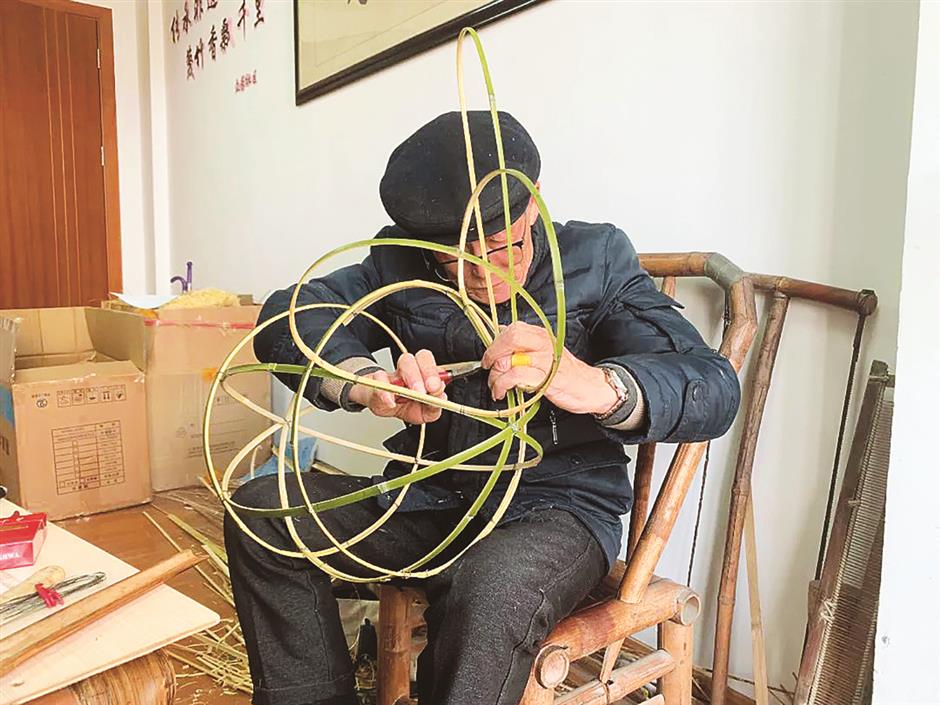Bamboo-weaving veteran seeks successor for ancient art technique
The sound of laughter echoes in the corners of the community when strolling through Jiading’s high streets with rabbit lanterns in hand, a scene that is embedded in many people’s childhood memory.
These lovely rabbit lanterns, in fact, are all made by an octogenarian Xue Qihua, a Jiading District native who is a skilled and dedicated inheritor of municipal intangible cultural heritage project Malu Bamboo.

Xue Qihua, a Jiading District native skilled in the ancient bamboo-weaving technique, uses bamboo to work out the skeleton of a rabbit lantern.
With a history of more than 300 years, the bamboo-weaving technique originated in the late Ming (1368-1644) and early Qing (1644-1911) dynasties and was introduced from Dongting near Taihu Lake in Jiangsu Province to Zhongfang Village in Jiading.
Xue was inexplicably linked with Malu Bamboo at an early age. “After I learnt to make rabbit lanterns, everyone was quite taken up with this stuff,” he recalled.

The rabbit lantern takes shape after paper is wrapped around the bamboo skeleton.
Over the years, time and things have changed. Now, there is no scramble to learn the art of bamboo weaving. “It is a tradition and a sentiment in our village, and it would be a shame if it disappeared,” Xue noted.
From dustpan, bamboo chairs and baskets to cup sets, Xue has produced over 100 pieces of woven bamboo works. The decline in physical strength and eyesight, however, has made the veteran feel feeble and powerless.

A bamboo cup holder weaved by the veteran
On a recent day, in the process of weaving bamboo strips, the old man had to take down his glasses for a while, look out of the window, rub his eyes again and again. “This is delicate work. If the vision is blurred, it is easy to get injured, and the efficiency is not high. Like this small bamboo basket, I could make two in a day before, but now it takes four days to make just one,” he pointed out.
Xue has been looking forward to meeting someone with a special passion for bamboo weaving and pass on the old skills from generation to generation.
In pursuit of this, in 2015, the Zhongfang Community Neighborhood Committee set up the Malu Bamboo Weaving Studio, with Xue taking bamboo-weaving classes from time to time in the hope of finding his successor.
“From start to finish, there are more than 10 laborious processes, each of which requires a solid foundation. Therefore, most youngsters give up after trying it for a while,” explained Zhu Chunhua, an official with the Zhongfang community.
The Jiading District Bureau of Culture and Tourism plans to open a course on Malu bamboo weaving this year to popularize this intangible heritage culture and cultivate suitable inheritors.
“I just hope to find one or two followers in each training process, and finally gather them together to stick to the art,” said Xi Jia, deputy curator of the Jiading District Cultural Museum.
Xue turns an inconspicuous bamboo into household utensils that can be used by thousands of households. Despite the passage of time, the art of Malu bamboo weaving still emits a fragrance, neither strong nor weak, permeating every nook and cranny of the community.
















